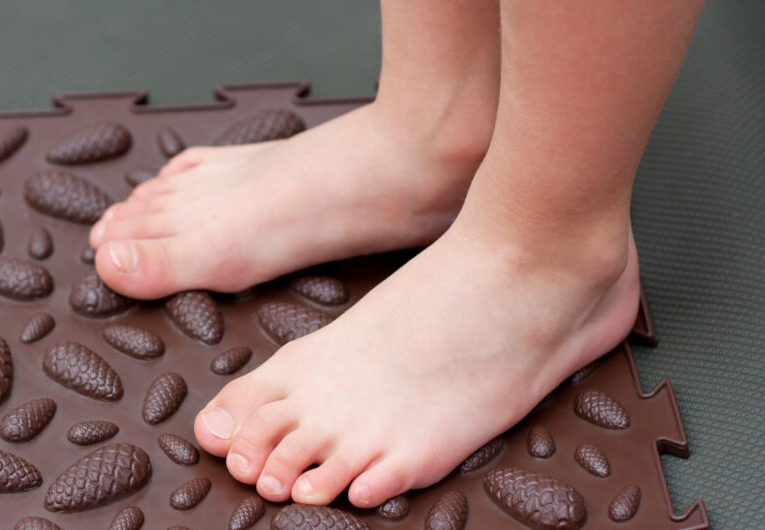What to know About Juvenile Bunions
Bunions are typically associated with adults, with our risk of developing these painful bumps increasing as we age. However, you may be surprised to learn that children and teenagers can also suffer from bunions. Early treatment is vital to prevent bunions from growing and affecting your child’s quality of life.
What are Juvenile Bunions?
Bunions are a kind of toe deformity that causes the base joint of the big toe to swell and develop sideways. Juvenile bunions carry the same symptoms as adult bunions, including:
- A bony lump at the base of the big toe joint
- Big toe pain
- Stiffness in the big toe
- Swelling of the big toe joint, including redness
- Difficulty walking
- Arthritis in the big toe
Over time, bunions can cause the big toe to drift towards the second toe and sometimes overlap completely. Left untreated, bunions can cause life-changing foot deformities requiring specialized footwear and ongoing treatments. As such, juvenile bunions are generally treated more urgently than adult bunions, as they could significantly impact a child’s future foot health.
What Causes Juvenile Bunions?
Most children who develop bunions have genetic traits that predispose them to the condition, including loose joints and excessive pronation (when the foot rolls inward). Excessive pronation can place significant pressure on the big toe, preventing it from functioning normally and causing pain while walking. Broadly speaking, children with close relatives who suffer from bunions are more likely to develop bunions themselves.
While genes play a significant role in juvenile bunions, some children may also develop bunions due to ill-fitting footwear. If a child’s shoes squeeze their toes and rub against the skin, they can cause foot deformities in the long term. Rarely, children can develop juvenile bunions due to rheumatoid arthritis, neuromuscular conditions such as cerebral palsy, or conditions that cause low muscle tone.
How Do We Diagnose Juvenile Bunions?
Fortunately, bunions are fairly easy to spot and only require a quick physical examination. During your appointment, our podiatrists may perform a gait analysis that assesses the following:
- Your child’s foot posture
- Their joint flexibility and range of motion
- Biomechanics of your child’s feet, ankles, and legs
Sometimes, we also use X-rays to assess the severity of the deformity and create a suitable treatment plan for the child.
How are Juvenile Bunions Treated?
The priority for our podiatrists is to treat the underlying causes of the bunion and prevent the problem from worsening. While this won’t eliminate the bunion, it will help the child live a comfortable life free from toe pain.
We recommend bringing a couple of pairs of your child’s shoes to your podiatric appointment, as this will allow our podiatrists to assess the impact of their footwear on the bunion and offer some helpful suggestions. The most common treatments for juvenile bunions include:
Custom Orthotics
Custom orthotics are shoe inserts designed to treat a wide range of podiatric issues. Children who suffer from bunions benefit from orthotics, as they can relieve pressure on the toe joint and prevent bunions from growing bigger. Orthotics won’t shrink your child’s bunions. However, a well-crafted orthotic will help reduce pain and swelling while protecting your child’s feet from further complications.
Before you go out and purchase some prefabricated orthotics, it’s worth noting that these over-the-counter options are much less effective than custom orthotics. Bespoke orthotics are designed to suit the precise shape of your child’s foot, ensuring their toes receive the best support possible. Our podiatrists will help supply your child with prescription orthotics suited to their needs.
If you’re unable to visit our office immediately or want to address your child’s bunions while you’re waiting to receive custom orthotics, you may wish to purchase some prefabricated orthotics. While these won’t work as effectively as prescription models, they can provide some interim relief.
Shoes With Wide Toe Boxes
Children with bunions must avoid shoes with narrow toe boxes, as these can cause significant pain and worsen your child’s symptoms. When you’re out shopping for new shoes, remember to look for pairs with large toe boxes, such as sneakers.
You may also wish to visit a specialist orthopedic shoe shop to ensure your child receives the best possible footwear. After purchasing a new pair of shoes, it’s a good idea to wear them on alternate days so your child can break them in.
Surgery (as a Last Resort)
Surgery is rarely recommended for juvenile bunions and is treated as a last resort. Performing surgery before the child’s growth plates have closed could permanently damage the child’s foot and cause long-term issues. However, if a child’s bunions do not respond to non-invasive treatments and their quality of life is affected by pain and swelling, our podiatrists may recommend corrective surgery to straighten the toe.
The precise nature of the surgery would depend on the child’s age and the size of their bunion. The child would then undergo a recovery period, including exercises to restore movement in the big toe. Children with bunions may need surgery in later life if their bunions worsen.
Contact Us Today for Pediatric Foot Care
Do you suspect your child has juvenile bunions? Don’t fret – the team at Richardson Podiatry Center is here to provide high-quality children’s foot care services. We’re happy to discuss non-surgical treatment options and provide your child with the custom orthotics they need to prevent their bunions from worsening.
For more information and to book an appointment, call (972) 690-5374 or complete our online contact form. One of our friendly team members will get back to you as soon as possible.

